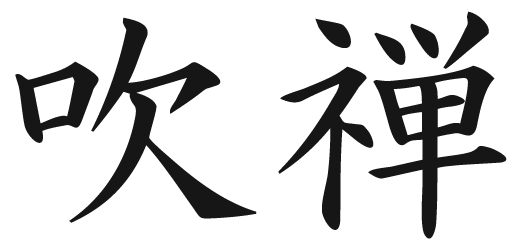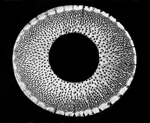|
Debunking Claims and Flawed Beliefs about
Edo Period 'Komusō Suizen' -
- Do Some "Scholars" Really "Debate" Such Issue?
- Who May Those "Critical Scholars" Be?

This web page was first presented online on August 28, 2024.
MARK MILLER, US American shakuhachi player:
Posted on June 23, 2024, in the Facebook group
Suizen - 吹禅
- Meditation through flute music
"Worth reading (and discussing) from the Yale Journal of Music and Religion.
The notion that Suizen is an ancient practice tradition in Japan is false, according to recent scholarship.
So (to paraphrase Tina Turner) what's "spiritual" got to do with it?"
Next, Mark Miller links to this online article by Mark Gillan, here the URL - copy, paste & click:
https://elischolar.library.yale.edu/yjmr/vol7/iss1/2/
Source: https://www.facebook.com/groups/298220013550046/search/?q=Yale%20Journal%20of%20Music
THORSTEN KNAUB, ESS Chair Person, Shakuhachi Atelier website:
"These komusō or 'priests of nothingness' saw the shakuhachi as a spiritual tool and used it as part of their spiritual exercises,
sometimes referred to blowing zen or suizen by some people today,
(although the term of suizen is nowadays pretty conclusively seen by scholars as a creation of the mid-20th century),
as well as using it for religious begging for food."
Source: https://shakuhachi-atelier.com/shakuhachi/history/
ERIC GENPU STRONG, new web page in preparation, as of September 8, 2024:
"There is very little information available about the Fuke-shu and the activities of the komuso.
There is significant debate among scholars about the group."
Source: https://www.myoanshakuhachi.com/suizen.html
New Eric Genpu Strong www.myoanshakuhachi.com web page in the making, visited again on September 8, 2024.
Search yourself on the internet with "suizen+scholars+myoan", and you'll soon spot a link to that web page.
CESAR VIANA, "Walking Suizen" website, caption "Suizen":
"Legend has it that the Komuso, samurai monks in traditional Japan, would use it for the practice of Suizen (blowing zen),
an alternative to the more widely known Zazen (sitting zen).
Actual historical evidence of the practice of Suizen by the Komuso
is widely disputed by modern scholars,
but the concept itself can be used in a very effective way as a powerful tool to enhance your practice.”
Source: https://suizen-academy.yolasite.com/
ELLIOT KALLEN, ISS Chair Person, society website, entry "History":
" - - - but the fact remains - we can never really know with any certainty how the komusō's meditative practice
called Suizen (Blowing Zen) was done."
Source: https://www.komuso.com/top/komuso_history.pl?lang=39
OLIVER AUMANN, acc. to former now offline personal website, about 'Suizen'/"meditation":
"There are no traditional texts in the Fuke-sect that would systematically explain how to meditate."
"The term seems to be relatively modern, but has become a kind of motto for the modern Komusō."
"In many cases suizen refers to nothing more than a ceremonial playing within a temple, with certain strict formalities."
Former WWW URL: https://sites.google.com/site/aumannshakuhachi/
CHRISTOPHER T. MAU, SOAS thesis, 2014, about 'Suizen':
"As surprising as it may sound to those already familiar with the expression, however,
the word's coinage is less than a century old, thus often rendering its usage somewhat anachronistic when applying it
in connection with pre-20th century practice."
Source: https://eprints.soas.ac.uk/id/eprint/18260
BOB BERLIN-GROUS & MONTY H. LEVENSON, 2019 book, page 91, about "Blowing Zen":
"If viewed only in terms of the political, sociological, and even musical history,
the connection between shakuhachi and Zen may indeed seem rather superficial.”
Link to the publication: https://www.shakuhachi.com/PG-Grous-SB.html
KIKU DAY at the ESS website, European Shakuhachi Society, “Shakuhachi Glossary”:
"Suizen
(吹禅)
– Lit: Blowing Zen. The act of playing the shakuhachi as an act of meditation.
Although widely used, this word is, according to Tsukitani Tsuneko (conversation, 2007), a post-Edo period creation."
Source: https://shakuhachisociety.eu/shakuhachi/glossary/
KIKU DAY, personal Facebook page, a photo comment, dated May 27, 2024:
"The classic shot in front of the suizen stone.
Yes yes we know about suizen… not an Edo concept."
Source: https://www.facebook.com/photo/?fbid=10159352784677003&set=pcb.10159352786062003
TSUKITANI TSUNEKO, remarkable 2000 book about classical 'honkyoku', page 172, note 138:
しかし、「坐禅」にかわる尺八修行の意味でいずから「吹禅」というようになかったか、その典拠を未だ見つける事ができない。
"However, I have yet to find any source as to when the term 'Sui-zen' first came to mean shakuhachi training in place of 'Za-zen'."
Trsl. by T.O.
Source: https://zen-shakuhachi.dk/to1852suitekishugyou.htm
Read here about that verifiably really short history of 'Suizen', beginning only as early as in 1950:
1950s ... : The Origin of 'Suizen' at Kyōto Myōan-ji:
Kobayashi Shizan, Tomimori Kyozan,
Tanikita Muchiku, Yasuda Tenzan,
Hirazumi Taizan, Koizumi Ryōan,
Fukumoto Kyoan, Yoshimura Sōshin a.o.
1977 & 1978: The Legacy of the Late Myōan Taizan-ha
'Suizen' Players/Teachers Yoshimura 'Fuan' Sōshin
& Ozawa 'Zetsugai' Seizan - and Hisamatsu Fūyō's
Sincere Ascetic Shakuhachi Credo 200 Years Ago
1995: This is Original 'Suizen' Shakuhachi, Myōan Taizan-ha
Tradition: Yoshimura Fuan Sōshin
'Suizen ichinyo', 1995 - An Utterly Ignored,
If not Even Deliberately "Purged", Yet Monumental
Myōan Taizan-ha 'Suizen' Shakuhachi Sound Collection
Cheers :-) Torsten O., September 1, 2024
|
|

